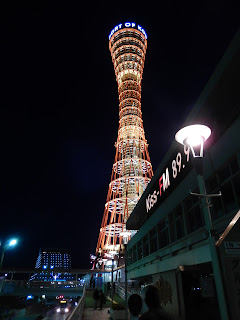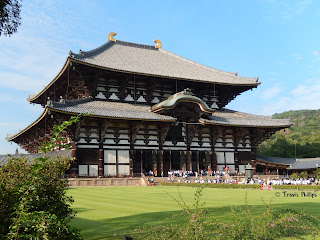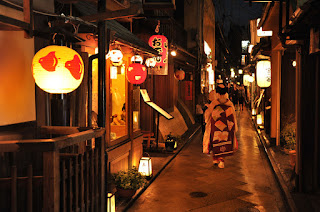If you're looking for a fun, quick trip to do on a weekend, Kobe can be reached by train in as little as an hour from the Makino station for around ¥830 - ¥1000 one way.
Kobe Beef
If you're really only after slab of the world renown beef, well, you've come to the right place. One very popular Kobe beef restaurant frequented both by the locals and tourists is called Steakland Kobe. (See on google maps). Literally, just a short walk from the stations North exit. Sometimes there can be a short line up but since they have two locations side by side, it usually doesn't take long to get a table.
Upon ordering, there's a few different general set menus for Kobe beef. Be prepared, this steak is not cheap but well worth it. I mean, where else better then Kobe to experience true, genuine Kobe beef? In North America, it's nearly impossible to find true Kobe beef. Many restaurants simply rip off the name and market their Kobe/Wagyu "Style" beef as the real thing. Only until recently, the beef was rarely exported, and even now in very minimal quantities, which is why I had no problem paying for the real thing, just to try it once.
 Kobe's other iconic half, welcome to the famous Port of Kobe. Not only a hub for major world wide shipping but the Port of Kobe contains a bustling shopping and entertainment district popular among the locals and tourists alike.
Kobe's other iconic half, welcome to the famous Port of Kobe. Not only a hub for major world wide shipping but the Port of Kobe contains a bustling shopping and entertainment district popular among the locals and tourists alike.One of the first things you'll see as you enter Kobe Port is the Kobe Port Tower. A 108 meter, lattice tower. One of the famous icons of Kobe, you've likely seen pictures of it around Japan. There's also an observatory deck just over 90 meters up the tower with astonishing views of the coastal city.
Aside from the scenery, the port offers plenty of other exciting activities to make for a great day trip! There's of course a Ferris wheel on the port side, a huge mall with tons of stores and some great restaurants in the area as well. I particularly loved visiting this city around Christmas time as the many of the streets were decorated with lots of lights, it had a really charming feel. Comforting perhaps even. Kobe has a very western feel to it as you'll notice when you see all the western style "churches" which are in fact mainly wedding chapels. In Japan today, it's becoming increasingly popular to have a western style wedding and Kobe is one of the more popular places for this.
Also, just a short walk from the port we found an awesome mini China town!
Tea Houses / Japanese Gardens
In Kobe, you can find many traditional Japanese Tea Houses. This one in particular was located inside a beautifully landscaped Japanese Garden with large Koi pond! We found Sōraku-en (相楽園) by a bit of an accident, just wandering around at random.
The Japanese Garden itself only cost ¥300 to enter, and I believe ¥500 do take part in a traditional tea ceremony that included a traditional Japanese dessert.
The garden is open between 9:00 a.m. - 5:00 p.m. (17:00). Plan carefully though as it is closed Thursdays between January 4 - December 28, or the following day when there is a national holiday.
Often there are a variety of exhibitions taking place here. When we went, there was a Bonsai exhibition taking place which was quite amazing to see. This was all included in the general entrance fee to the garden.
You can find a link to the Gardens English pamphlet HERE























